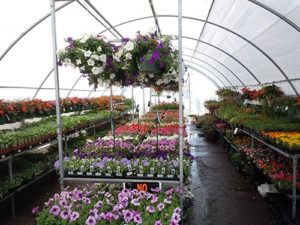
As spring starts to roll around, the garden centers, greenhouses, and nurseries fill up with seeds, bulbs, and pots of brightly colored plants in full bloom. It’s a scenario that plays out every year in just about every town or city.
At the same time, the weather is warming up and everyone is getting the gardening itch. It’s the traditional planting season and we all want to be able to work in our gardens while the weather is nice, the bugs aren’t too bad, and summer activities haven’t taken over our free time. So, we drive over to our favorite local garden center / greenhouse / nursery to buy our plants.
However, if you are looking for native plants there’s one major hitch to that plan. Many species may not be available early in the season. Other species may be available early in the season, but not later in the season. There’s probably not going to be one time of year when you can go and get everything that you want. And in a world where we can now get pretty much anything we want, whenever we want it, not being able to do that can be frustrating.
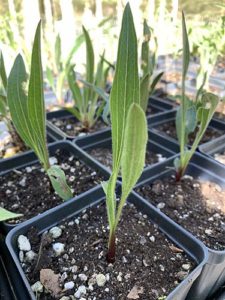
So, what’s the deal? Why are some native plants only available during certain seasons? Well, to answer that, we have to look at the plants and at the nurseries. We’ll start with the plants.
Native Plant Growth Cycles
Not all native plants bloom at the same time. Some bloom REALLY early in the spring. Some bloom in the spring. Some bloom in the heat of summer. Some bloom as summer transitions into fall. And still others wait until fairly late in the fall to bloom. Those different bloom times mean that different species of plants can be in very different growth stages at any given instant in time.
For instance, bloodroot is one of our early spring ephemerals and blooms before the trees have leafed out. It’ll come up, leaf out, bloom, and go to seed before something like common milkweed starts to poke its first sprouts up. Species that bloom in late fall, may take even a little longer to fully wake up and break dormancy.
When it comes to grasses, we actually categorize them as either cool season or warm season based on when they break dormancy and begin growing. Sometimes I think a similar classification of herbaceous perennials would be helpful in recognizing when different flowers tend to look the best and be available for sale.
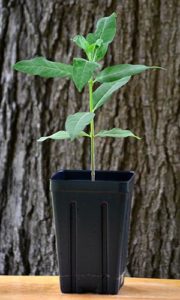
The age of the plant can also influence when it begins growing each year. Mature plants may break dormancy and begin putting out vegetation before any seeds from the previous year start sprouting. That’s because the more mature plant has a stronger root system to draw upon for nourishment and support if the weather turns bad. Also, even if the vegetation on a mature perennial gets killed by a late freeze, the roots usually have enough energy to produce new vegetation.
However, a newly sprouted seedling doesn’t have that support system. It’s trying to grow roots and vegetation at the same time. So, if it comes up too early and gets hit by a late freeze, its dead. There’s not enough energy stored in the roots to produce a second round of vegetation. A good example of this are the milkweeds.
Common milkweed and butterfly milkweed that have overwintered in the ground will come back earlier in the spring and will be able to withstand temperature dips better than newly sprouted seedlings. Milkweed seedlings tend to grow best in warmer temperatures and falter during early season temperature swings.
So, some native plant species aren’t available early in the season because the mature plants haven’t broken dormancy yet and/or the seedlings haven’t had time to sprout and grow to a sellable size. Which leads us to the second part of the equation and that is the way that many native plant nurseries operate.
Native Plant Nurseries
Many local native plant nurseries are relatively small, especially compared to more traditional nurseries, greenhouses, and garden centers. Many of them also tend not to rely on greenhouses to force their plants to break dormancy early or to sprout seeds months ahead of when they would naturally germinate. Instead, they overwinter and grow their plants outside in natural conditions as much as possible.
That means their plants are naturally in sync with the seasons and weather. (In other words, you don’t have to harden the plant off like you would a greenhouse grown plant early in the season.) However respecting those natural cycles and growing periods, means there are some species they aren’t able to offer early in the season for the reasons stated above.
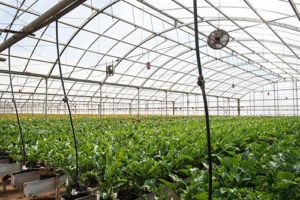
So why can garden centers / nurseries / greenhouses offer so many plants early in the season?
Many of the plants that fill the garden centers, greenhouses, and nurseries early in the season are annuals that are native to other countries. As annuals, these plants have a long bloom season so they have the best chance of producing as many seeds as possible before they die. Any perennials that are available have often been grown from cuttings of more mature plants which means that they usually don’t take as long to reach a sellable size or to start flowering as a plant grown from seed.
All of these plants are also typically grown in large, climate-controlled greenhouses. So while winter rages outside, the plants inside may be experiencing spring-like conditions to get them ready to sell early in the growing season. However, the downside is that these plants are also more sensitive to the natural swings in temperature (and late snow storms or freezes) that can occur in the early parts of spring. So, they need more babying and attention because their growth cycles aren’t necessarily in sync with the current season.
Summary
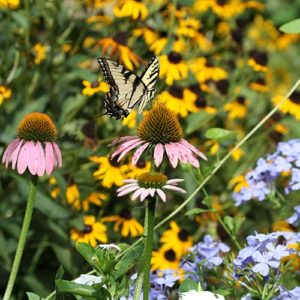
Interest in growing native plants has been increasing over the last decade or so. However, one frustration that people sometimes experience when trying to buy native plants from their local native plant nursery is that early in the season there is a limited selection of available species. Often popular species, like many of the milkweed species, may not be available until later.
The frustration can be amplified by the fact that traditional garden centers, nurseries, and greenhouses seem to have everything available as soon as the weather starts to warm up. However, the differences in the ways that the plants are grown in those traditional facilities vs the way the plants are grown in small, local native plant nurseries along with the differences in the growth cycles of the native plants themselves vs those of traditional nursery plants are the reasons why many native plant species aren’t available early in the season.
When it comes to native plant gardening, it’s ok to spread your planting season out. Plant the species that are available early in the season. Then come back to the garden later to plant those species that take a little longer to wake up and become available. One of the benefits of spreading your planting season out is that you’ll have access to a wider variety of species and you’ll have more time to do other fun things in the spring.
If you want to keep up with everything going on in the Backyard Ecology world, then please subscribe to our emails. And when you sign up for our emails, you’ll receive a link to download a free e-book that explains why our familiar garden zones don’t mean anything when it comes to gardening with native plants. That’s just our way of saying thank you for your interest in Backyard Ecology.

Backyard Ecology: Exploring Nature in Your Backyard
Nature isn’t just “out there.” It’s all around us, including right outside our doors. Hi, my name is Shannon Trimboli, and I am the host of Backyard Ecology. I live in southcentral Kentucky and am a wildlife biologist, educator, author, beekeeper, and owner of a nursery specializing in plants for pollinators and wildlife conservation. I invite you to join me as we ignite our curiosity and natural wonder, explore our yards and communities, and improve our local pollinator and wildlife habitat. Learn more or subscribe to my email list at www.backyardecology.net.

Leave a Reply